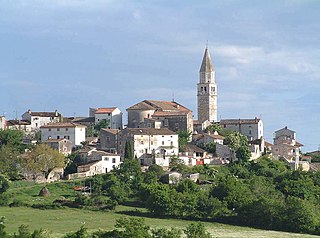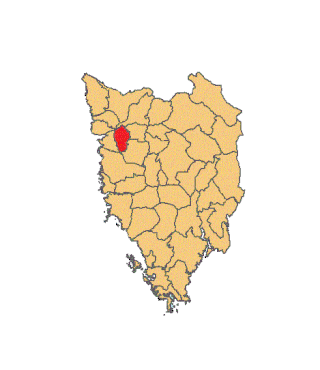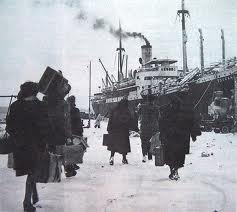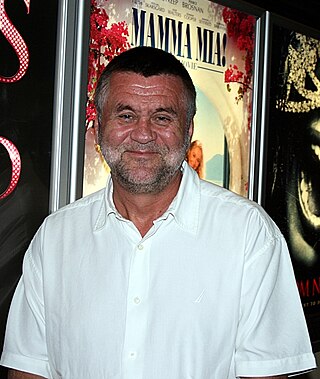
Istria is the largest peninsula to border the Adriatic Sea. Located at the top of the Adriatic between the Gulf of Trieste and the Kvarner Gulf, the peninsula is shared by three countries: Croatia, Slovenia, and Italy, 90% of its area being part of Croatia. Most of Croatian Istria is part of Istria County.

Istria County is the westernmost county of Croatia which includes the majority of the Istrian peninsula.

The Dubrovnik-Neretva County is the southernmost county of Croatia. The county seat is Dubrovnik and other large towns are Korčula, Metković, Opuzen and Ploče. The Municipality of Neum, which belongs to neighbouring Bosnia and Herzegovina, divides the county in two parts which are connected only by the Pelješac Bridge. The southern part of the county consists of Dubrovnik and the surrounding area, including the Pelješac peninsula, and the islands of Korčula, Lastovo, Mljet, Šipan, Lopud and Koločep. The northern part of the county includes the Neretva Delta, the Baćina lakes north of Ploče, and a swath of hinterland near the southernmost slopes of Biokovo and around the hill of Rujnica. The northern part of the Mljet island is a national park. The Lastovo archipelago is a designated nature park. The southernmost tip of the county is the Prevlaka peninsula at the border with Montenegro. It is the only Croatian county that borders Montenegro.

Višnjan is a village and municipality in Istria, Croatia. Višnjan is the site of Višnjan Observatory. The observatory is home of several long-running international summer programs for youth in astronomy, archeology, marine biology and other disciplines.

Motovun is a village and a municipality in central Istria, Croatia. In ancient times, both Celts and Illyrians built their fortresses at the location of present-day Motovun. The name of the village is also of Celtic origin, derived from Montona, meaning "a town in the hills". The Parenzana, a narrow-gauge railroad that ran from Trieste to Poreč between 1902 and 1935, passed below the town.

The Motovun Film Festival is an annual film festival established in 1999 and held in the small town of Motovun, Croatia until 2023, when it moved to a new location, Petehovac in Gorski Kotar. It usually takes place over five or six days in late July or early August.

Kaštelir-Labinci is a municipality in Istria, Croatia. Kaštelir and Labinci have been gradually urbanized over the centuries, and have gradually merged into one place. According to historical data, Labinci used to be a bigger place than Kaštela, but today Kašteliri is a bigger place, which is also evident from the name of the place. Throughout history, these two places were under the jurisdiction of Motovun and later Vižinada.

Oprtalj is a village and municipality in Istria, Croatia. Oprtalj is a community in the central northern part of Istria County, situated across the Mirna river valley from the village of Motovun, about 20 km northwest of Pazin.

The Italian language is an official minority language in Croatia, with many schools and public announcements published in both languages. Croatia's proximity and cultural connections to Italy have led to a relatively large presence of Italians in Croatia.

The Lika cap, also known as kićanka ("tassel") or crvenkapa, is an important cultural symbol of the Lika region in Croatia, part of the Lika national costume traditionally worn by local Croats and Serbs. It is cylinder-shaped, with a flat top in a red colour, black sides, and often with a black tassel in the back.

Rajko Grlić is a Croatian film director, producer and screenwriter. He is a professor of film theory at Ohio University and artistic director of the Motovun Film Festival in Motovun, Croatia.

The Mirna is a river in Istria, Croatia. In ancient times it was called the Aquilis. It is Istria's longest and richest river, being 53 km (33 mi) long and having a basin covering an area of 458 km2 (177 sq mi). It rises near Buzet, passes along Motovun and empties into the Adriatic Sea near Novigrad.

Istrian Italians are an ethnic group from the Adriatic region of Istria in modern northwestern Croatia and southwestern Slovenia. Istrian Italians descend from the original Latinized population of Roman Histria, from the Venetian-speaking settlers who colonized the region during the time of the Republic of Venice, and from the local Croatian people who culturally assimilated.

D44 is a state road connecting A9 motorway Nova Vas interchange to A8 expressway Lupoglav interchange via Buzet. The road is 50.5 km (31.4 mi) long.

Livade is a village located near Oprtalj and Motovun, in Istria, Croatia.
The Filip Trade Collection is a large private collection of contemporary Croatian art. The collection is a subsidiary of Filip Trade, a distribution company with its offices located in the capital city of Croatia, Zagreb. The offices and collection are currently undergoing a move and will soon be relocated in a purpose built venue in the Črnomerec district of Zagreb, Croatia. The collection was founded in the nineties with the acquisition of the Drystone Walls graphic by artist Oton Gliha, an acquisition suggested by the Croatian art critic and connoisseur Radovan Beck. Nowadays, the collection holds works of Croatian artists created from the 1950s, up to today. The earliest piece in the collection dates back to 1949 and is the bronze sculpture Bara with a Chicken by the Croatian sculptor Ivan Kožarić.

Šumber is a village and ruinous castle in the eastern part of Istria County, Croatia, in the municipality of Sveta Nedelja.

Brkač is a village in the municipality of Motovun, Istria in Croatia.

Kaldir is a village in the municipality of Motovun, Istria in Croatia.


















